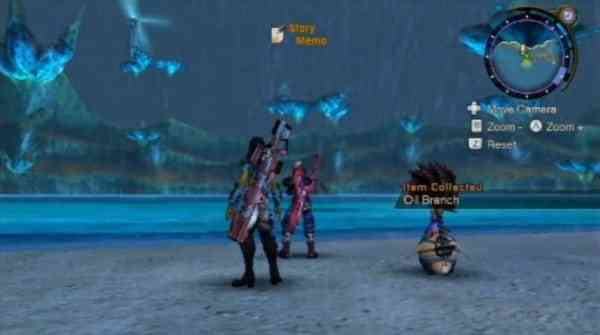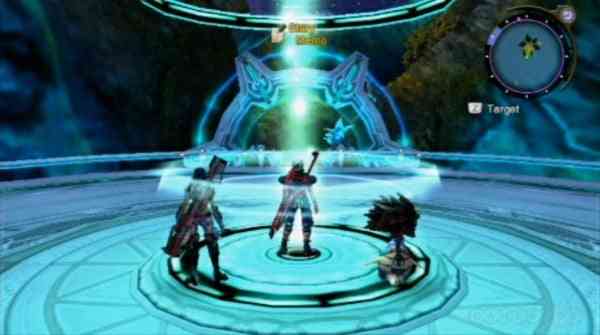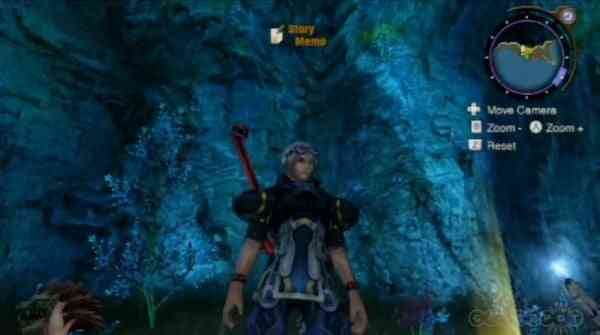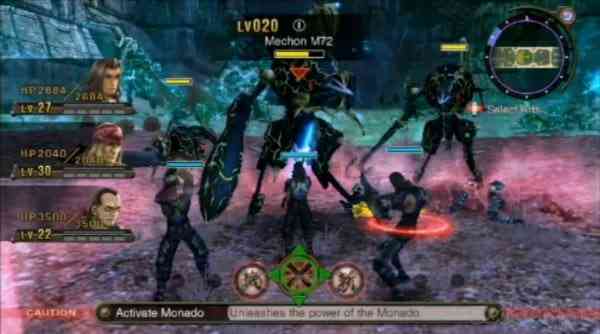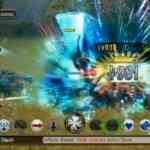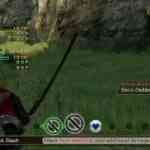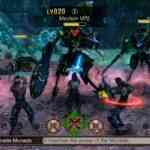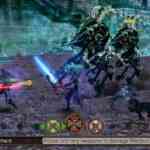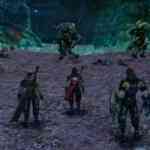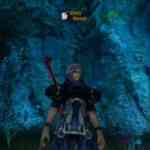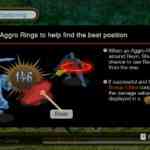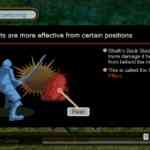When I first heard there was a very popular Japanese RPG called “Xenoblade Chronicles” coming to North America, I was very interested but at the same time very cautious. After all, I have been let down many times before with RPG’s that simply failed to deliver. So needless to say, I wanted Xenoblade to be one of those RPG experiences that not only wets my RPG appetite but delivers one of those unforgettable experiences you can play for months on end. Fortunately Xenoblade Chronicles does all that and more.
The game begins with explaining how before the world was created, a never ending battle raged between two giants: the Mechonis and the Bionis. As the millennia passes, their lifeless corpses were forever locked in battle with the Bionis becoming a land where life grew and the eventual home to the humanoids known as the Hom. Unfortunately, the Hom’s existence became threatened by mechanical beings known as the Mechon, an army of machines originating from the Mechonis. A fierce battle between the Homs and the Mechon was fought and won by the hero Dunban, a Hom who was the only one able to wield a mighty and mysterious sword known as the Monado that can defeat the Mechon. With the use of the sword, Dunban and the Homs were victorious but at the cost of Dunban’s arm which became nearly useless.
One year later, a young researcher named Shulk and his friends are living in Colony 9 in peace until they are unexpectedly attacked by the Mechon. Dunban attempts to use the Monado but is too weak to do so, requiring Shulk to take up the sword and drive the Mechon threat away. Throughout the course of the battle, his childhood friend Fiora is apparently killed by “Metal Face,” the leader of the Mechon. Swearing vengeance, Shulk and his friend Reyn travel to the other colonies to find Metal Face and avenge Fiora and unravel the secrets of the Monado. Throughout his travels, Shulk begins to unlock the mysteries of the Monado and gain powers including the ability to briefly foresee the future which helps him change events before they happen such as saving his friends.
The element of friendship is a predominant theme as Shulk and his friend’s battle enemies, take on quests and solve problems for NPCs. These relationships are measured in the form of “Affinity” which affects how you are perceived by others and increases the ability to work together in battle. More importantly, having Affinity between characters reveals a level of the relationship that otherwise may not be seen. If certain conditions are met, players can also experience “Heart to Hearts” which are situations marked on the playing field that further reveal and develop the relationship between characters by the conversations they share. All of this is intended to add character development and give more background on subplots that may otherwise not be revealed.
As mentioned, one of the ways players can develop Affinity within your party is battling together. Using the team leader in your party, you target an enemy using the “Z” button. Once you target the enemy that is within range, it reveals its enemy level and thus the level of difficulty required to defeat it. For example, if the leader and my group are about levels 15 or 16, it will be nearly impossible in defeating an enemy that is a level 75. In fact, you may even have some trouble defeating enemies or creatures that are only one level above you as sometimes they attack in groups.
If you decide to engage the enemy, you have the option of initializing an Auto Attack, cancelling the attack, or running away. If you choose Auto Attack, your character automatically fights the enemy with the weapon in hand if they are close enough. Another option is to select a number of “Arts” which are unique abilities that differ from character to character and range from special attacks, healing, increasing a player or team’s defence or offence, guarding, and decreasing the “aggro ring,” which is a ring surrounding a character indicating the enemy has focused its attack on you. Once you select and use an Art, a cool down period is required before it can be used again. More powerful Arts known as “Talent Arts” can also be used but are only available after using enough Auto-Attacks.
If your characters is successful in attacking and landing enough critical hits, your group morale or Affinity bar in the top left of your screen increases until it is full and a blue line appears that connects all of you like a chain. This signifies that you can perform a chain attack. When you initiate a chain attack, time stops and you control each player to select a corresponding “Art” in order to form a combination attack against the enemy. If each following “Art” corresponds with the following one, the longer the chain and more effective the attack becomes.
As previously mentioned, Shulk has the ability to foresee the future and this power is also integrated into the battle sequences by “seeing” the enemy perform a special attack before it occurs, enabling Shulk to either help his friends, avoid or guard himself from it. Considering battles are dynamic events, you can warn, encourage and sometimes revive fallen characters while in battle mode. You can also create some basic commands to your teammates such as focusing your attacks on one enemy, falling back to the leader or attacking at will.
After a battle is complete, Shulk and his party steadily recover their health and earn experience points to level up. Levelling up causes your characters to become stronger, have more health points and enable you to add points towards the “Art” of your choice and thereby strengthening that “Art” to become more powerful. Any spoils from the battle can also be collected at this time and can range from various materials, weapons, armour and other items. Better equipment can also be bought and sold from shops you encounter in your travels where you can customize your character to how you see fit. Changes to a character’s clothing are visible in gameplay as well as in cut scenes.
Exploring the land in Xenoblade Chronicles is impressive and you are free to explore most areas from the start of the game. The land is so large that according to the games director, the world is about the size of the Japanese archipelago. I have to admit, just exploring Shulk’s home colony was surprisingly big and running around the open world environment was almost overwhelming. Unlike other RPGs, you can fall off a path and sustain damage. A mini-map is available at the top corner of the screen and a larger map is also available in a separate screen. Since the world is so large, you can conveniently jump to landmarks that you have come across instead of manually running everywhere. If you decide to run or walk, an arrow on the top of your screen directs you which way to go and the distance required in travelling it.
Of course exploring the land is fun especially when you come across some powerful, high level creatures that are just roaming around. Some were so enormous that they rival some of the games bosses. When I saw these creatures, I looked forward to the day where I would be powerful enough to return and defeat it. It should be noted not all of the creatures in the game will attack you without provocation and some will leave you alone. The creatures also vary in attack, speed and agility with some flying like dragonflies or others working in packs like lions. The Mechon (the mechanical beings) use laser beams, fire, or choose to crush you with their arms.
Needless to say, this game has depth. Just when you think you have got a handle on things and how the game works, a tutorial menu pops up explaining another feature of the game that you haven’t accessed until that point. These pop ups were handy as it can be a lot of information to take in. If you do become confused, there is an accessible help feature that explains elements of the game as well as providing reminders of the current task or quest at hand. All of this comes together pretty nicely with the on-board menu system where you can quickly look at your available items, your “Arts” and skill trees, the Affinity between characters and managing your party and their equipment. I used the Wii-more and the nunchuk for the controls with the nunchuk primarily used for movement and camera changes while the Wii-mote was used for accessing the menu and selecting an action. Combined, the controls and the menu items made for an accessible experience that didn’t feel clumsy.
One of the things I noticed about Xenoblade Chronicles as a whole is that it manages to flow quite nicely. Loading and saving times are fairly quick. The battles are fluid as there is no loading time to transition into a “Battle Stage” seen in other RPGs that typically involve a drawn out process of formally fighting the enemy with different camera angles and the obligatory victory poses. Instead, the action transitions seamlessly between exploring and fighting using the same third person view. That being said, the camera views do need some work during battles where you are fighting in tight areas as there are times you cannot see anything but a close up view of the enemy.
Tied to the seamless way between battling and exploring is the pace of the game. I’ve mentioned how quickly it can be transitioning from exploring to battling but even the cut scenes and conversations with the NPCs do not slow down or wait until you have pressed a button. You can skip conversations but there is no way to pause them or slow them down unless you press the home button. I found this forced me to pay attention to the story more since it was setting the pace. Even completing the side quests are speedy affairs in that you don’t often have to return to the person you agreed to complete a quest for and instead the game automatically updates you when you’ve reached your goal, such as destroying a certain number of Mechon. This was very handy as it is sometimes a chore to go all the way back to an area just to let a character know you have finished their quest for them.
Visually, the game looks great considering the Wii’s graphic limitations. At first I was a little disappointed with the initial cut scenes as the characters were a little jagged around the edges but this was probably due to the amount of action happening at that time. Walking around and exploring the environments in actual gameplay could also look a little smoother but it seems to get better over time. You’ll notice that during cut scenes and when there isn’t a lot of stuff going on (such as a massive Mechon attack), the characters are not particularly detailed in terms of skin texture or hair but the expressions on their faces convey emotions very well. Otherwise the graphics during standard gameplay are satisfying to look at and really stand out during battle as your sword flashes when it hits your target or the moving electric blue light that connects between you and your party when you’re ready for a chain attack. The in-battle visuals are definitely the highlights of the game.
The voice acting in English was a little off putting in that the characters sounded too aristocratic so I switched it to Japanese. Even though my Japanese is at a conversational level, it sounded far more authentic for the characters to speak this way and really made the game seem like an anime during the game’s cut scenes. Whatever I did not understand in Japanese, I was able to read with the English subtitles which helped me figure out what was going on in the story. The music is also done very well. It sounds exotic and becomes more dramatic during battle.
Overall, Xenoblade Chronicles is one of those fantastic RPG’s without a lot of filler. It is a smooth yet fast paced game that manages to offer up enough complexity to satisfy hardcore gamers but is also accessible enough for those new to the RPG world. The story is engaging and the amount of exploration in the game is impressive. While the games visuals are nothing to write home about, Xenoblade Chronicles for the Wii stands as one of the best RPG experiences on the Wii to date.
